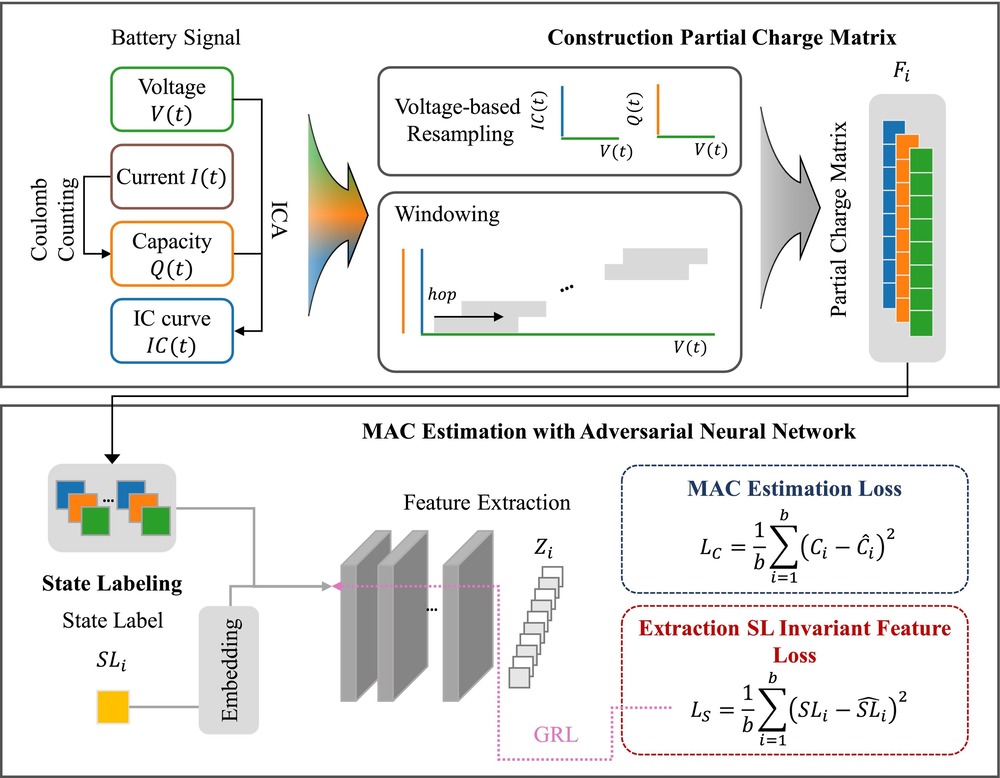2025 Battery Maximum Available Capacity Estimation in Partial Charge Curve with Current Charge State Invariant Feature
본문
- Journal
- Journal of Energy Storage
- Date
- 2025-12
- Citation Index
- SCIE (IF: 9.8, Rank: 14.0%)
- Vol./ Page
- Vol. 138, pp. 118726
- Year
- 2025

Abstract
Accurately estimating the maximum available capacity (MAC) of lithium-ion batteries is crucial to ensure their efficient utilization and long-term reliability. However, the MAC diminishes non-linearly due to complex electrochemical degradation mechanisms during battery usage. Existing deep learning-based studies have primarily relied on entire charge-discharge cycle data or degradation features extracted within specific ranges. These methods, while effective, face practical limitations when applied to short-term charging processes commonly encountered in real-world battery usage scenarios. To address these challenges, this study introduces a health-related partial charge matrix framework, which extracts degradation information from short-term charging data using partial charge data and incremental capacity analysis (ICA). To further enhance estimation robustness, a state discriminator is proposed to mitigate feature variation caused by differences in the current charge state. The effectiveness of the proposed methodology was validated using two battery datasets, demonstrating that the health-related partial charge matrix improves estimation performance by approximately 9.7 % compared to conventional approaches. Moreover, the incorporation of the state discriminator resulted in an additional 2.1 % improvement over general models used for MAC estimation. These results confirm that reliable and accurate MAC estimation can be achieved even with dynamic short-term charging data, offering a practical and scalable solution for real-world battery management systems.
